Flowering plants, also known as angiosperms, can be broken into two groups: monocotyledons (monocots) and dicotyledons (dicots). You’ve probably heard these terms being discussed by gardeners, and if you don’t know the difference it can be intimidating to ask.
Grasses, onion, monster and palm trees are all examples of monocots and if you look closely you will start to see a lot of things in common. These are in contrast with dicot examples like mint, dandelion, legumes and eucalyptus trees.
This article will help you understand the difference between these two groups so that you don’t feel left out of the conversation.
Embryos
The first way monocots and dicots are different is evident in their names: monocotyledons have one cotyledon, and dicots have two.
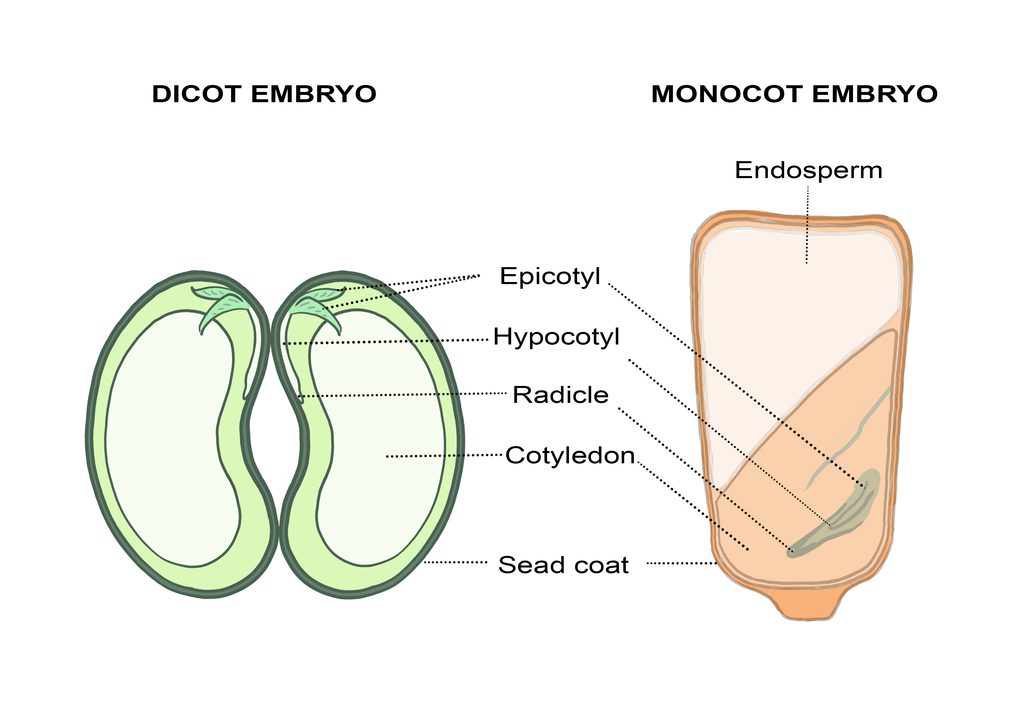
Different embryos between a dicot bean and a monocot grain. The main elements can look vastly different between species. Diagram via Plants Grow Here.
Inside a seed is a plant embryo, which is the baby plant, a protective barrier, one or two embryonic leaves, and a source of food. These basic elements are expressed differently in different angiosperms.
Cotyledons are used as a source of food in dicots, as well as the first embryonic leaves, as can be seen in the first 2 leaves of a maple sprout that look nothing like the true leaves that emerge afterwards. Monocots usually have an additional food source in the form of the endosperm.

See the difference between the cotyledons and the true leaves on this Acer negundo maple sapling. Image source
Roots
It’s hard to identify a monocot by the roots, but if you see a tap root on the plant, you’ve got a dicot on your hands.
The embryo contains a baby root called a radicle, and in dicots this embryonic root may emerge as a single tap root, at least at first. A tap root is a thick one that goes straight down, like a carrot or dandelion root.
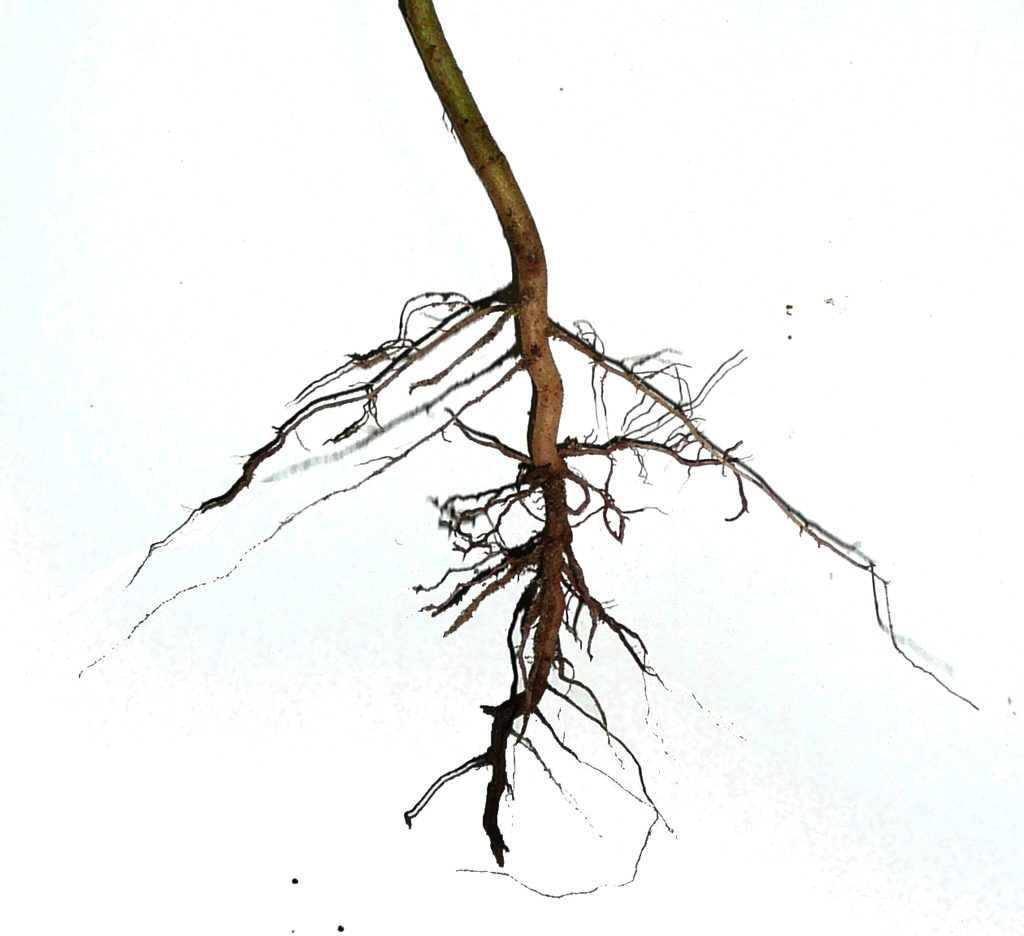
This is a tap root that has lateral roots. Image source
Most dicots outgrow their tap root so that it only plays a special role during germination and early life, and can be said to transition into a fibrous root system.
Fibrous root systems aren’t based on one main root; instead, they have a huge number of roots moving in all directions and branching as they go along. All monocots have a fibrous root system, as seemingly do some dicots.
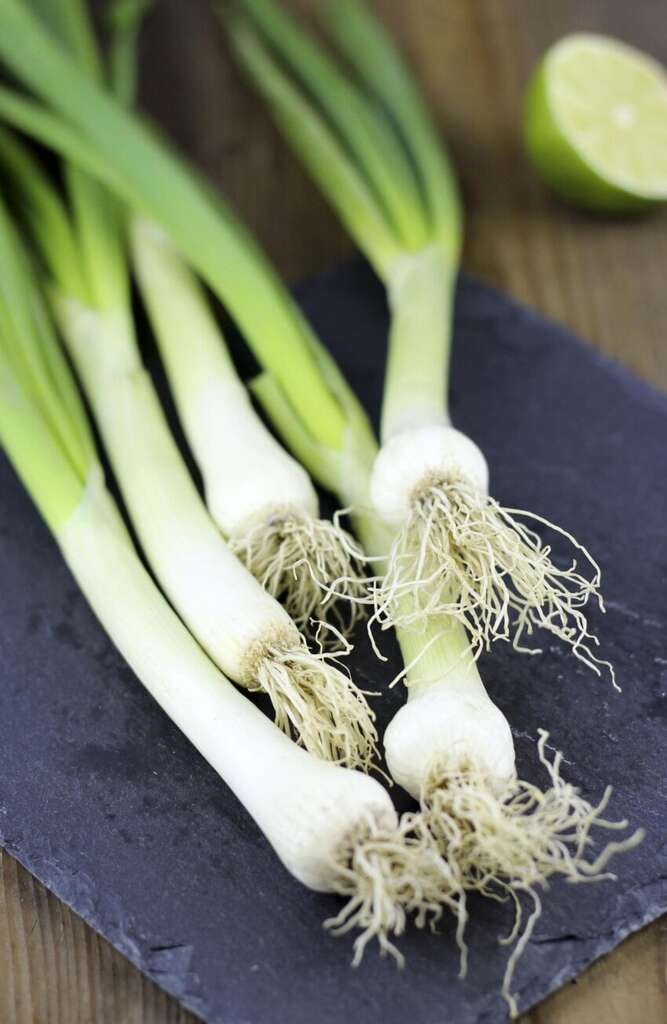
The bulb on these spring onions are the stem, and you can see the fibrous roots coming from the base. Image source
Vascular Systems
Another way the two types differ is in the way their vascular bundles are ordered.
Dicots have very orderly bundles forming rings around a centre, whereas monocot bundles are haphazardly arranged throughout the stem.
If there are tree rings present, it’s definitely a dicot, and if the cut stem looks like a palm tree with lots of undifferentiated fibres and lacking visible xylem and phloem rings, that’s an indicator it’s probably a monocot.

Dicot vascular bundles of xylem and phloem are arranged in a ring, whereas monocot bundles are sporadic. Diagram via Plants Grow Here.
Leaf Veins
Monocots tend to have parallel leaf veins (or venation), where the veins run parallel from the leaf stem (or petiole) to the tip, as seen on a blade of grass.
Dicots tend to have reticulate leaf venation, where the veins branch off and laterally. There may or may not be one main vein (or midvein) that all others branch from.
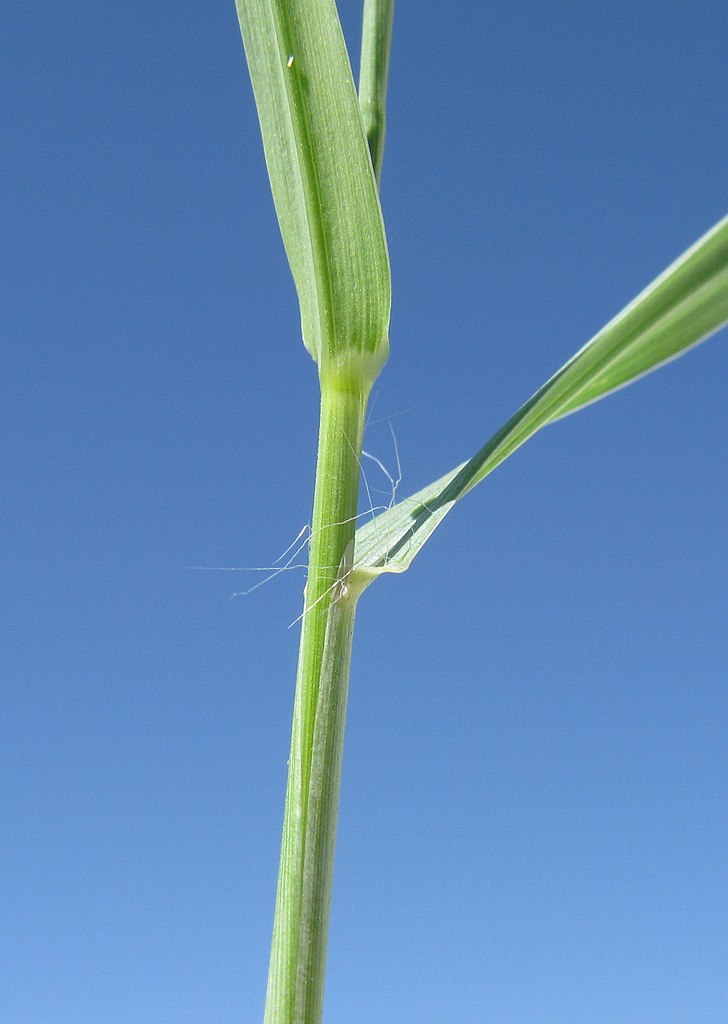
Grasses are an example of parallel leaf venation in a monocot. Image source
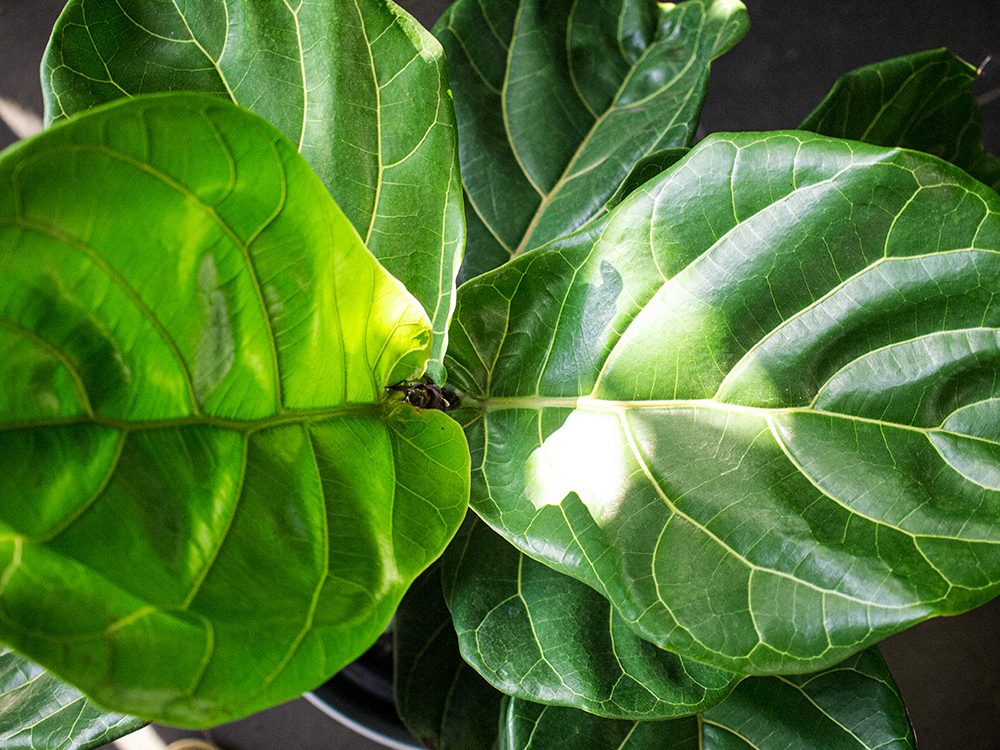
The ficus genus are dicots, and the leaves on this fiddle leaf fig are reticulate. Photo via Plants Grow Here.
Leaf venation is not an exact way to make an identification, because there are exceptions and blurring to the rule on both sides.
Flowers
One of the best ways to distinguish between the two types of angiosperms is to look at the flowers.
Flowers are made of individual parts such as stamens, petals, sepals, and more. If these parts number in multiples of three, this indicates a monocot. However, if the parts are in multiples of 4 or 5, you’ve probably got a dicot on your hands.

Lilly flowers have 3 sepals (that look like petals), 3 petals and 6 stamens. Image source

Mustard weeds are dicots that have 4 petals, 4 tall stamina (stamens) and 2 short stamina. There are various types of mustard weed in the family Brassicaceae. Photo via Plants Grow Here.
Looking at the image of the mustard weed above, we see two flowers that look a bit different. One has 4 leaves more or less displayed in a cross, and the other flower has 3 petals with one hiding behind another so it looks like the flower only has 2 petals. Sometimes a petal or two get nibbled on or simply fall off.
If you were to look with a magnifying glass, you’ll see there are 4 tall and 2 short stamens bringing the total to 6 stamens. We might be confused because 6 is a multiple of 3, indicating a monocot yet there are 4 large stamens and 4 petals, indicating dicot(?). Then we see it has a taproot and we know for sure it’s a dicot, because monocots never have a taproot.
Identifying plants can be very difficult, especially in cases like this where we have one flower missing a petal, which is why it’s always easier to identify a plant where there are many flowers and leaves available so we can get a better picture of what’s normal for the plant
Secondary Growth
Some dicots have lateral growth, meaning that they grow thicker each year by growing new tissue between their phloem and xylem in a cambium. Plants that do this create tree rings as more growth is put on in spring and summer than in winter, creating differentiation in the thickness of summer growth and winter growth.

Dicots start out with many bundles separated in a ring formation, then as secondary growth occurs the secondary xylem and phloem meet and form complete rings. Diagram via Plants Grow Here.
Some dicots and gymnosperms have secondary growth where meristematic tissue between xylem and phloem produce new tissue which thickens the stem.
Almost all trees are dicots and get thicker over time, however some monocots show “anomalous secondary growth” where they become thicker without a vascular cambium, sometimes by individual cells thickening over time.
Palm trees, banana trees and yuccas are all examples of monocots with anomalous secondary growth.
Are Cone Bearing Plants, Ferns And Mosses Classed As Monocots Or Dicots?
Trick question! None of these are flowering plants, and are unrelated to monocots and dicots. You can read more about the four groups of plants here.
Conclusion
As mentioned above, there are exceptions to the rules so if you know the species’ scientific name you’ll be able to do a Google search in order to know for sure.
Despite the differences, monocots and dicots are still quite closely related. Current thinking is that all angiosperms come from a single line of gymnosperms that developed the flower around 130 million years ago.
